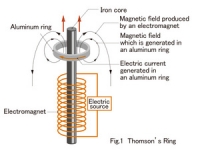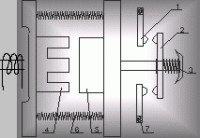Hello.
For some time now I have been wondering how a contactor with a 230V AC coil works. After all, alternating current creates an alternating magnetic field, which would either attract or repel the contacts - such behavior is not suitable for closing the circuit. Another problem is when crossing zero the field disappears and nothing is holding the contacts. You could straighten the current, add a resistor or some other components, but I don't think that's what this is about. On the Internet I found a few answers about how such a contactor works, but I have not fully understood how a compact coil works. Is it a normal ring as shown?

Besides, it does not explain the solution to the variable field problem - attraction and repulsion.
I am asking for help in explaining the operation of such an electromagnet.
I have a second question (partly related due to alternating current), namely how does an alternating current welder work if the arc disappears when crossing zero?
Please help and thank you in advance for your answer
For some time now I have been wondering how a contactor with a 230V AC coil works. After all, alternating current creates an alternating magnetic field, which would either attract or repel the contacts - such behavior is not suitable for closing the circuit. Another problem is when crossing zero the field disappears and nothing is holding the contacts. You could straighten the current, add a resistor or some other components, but I don't think that's what this is about. On the Internet I found a few answers about how such a contactor works, but I have not fully understood how a compact coil works. Is it a normal ring as shown?

Besides, it does not explain the solution to the variable field problem - attraction and repulsion.
I am asking for help in explaining the operation of such an electromagnet.
I have a second question (partly related due to alternating current), namely how does an alternating current welder work if the arc disappears when crossing zero?
Please help and thank you in advance for your answer







